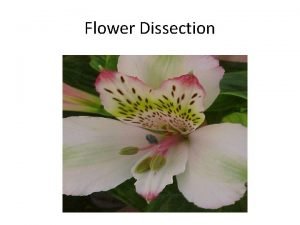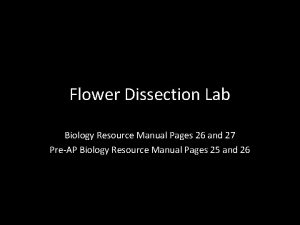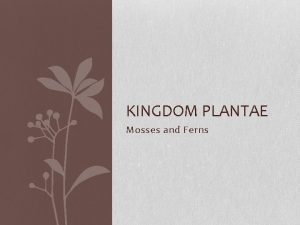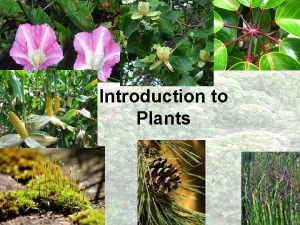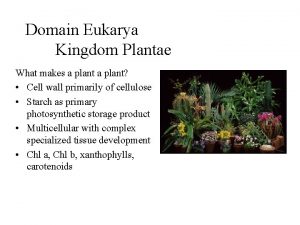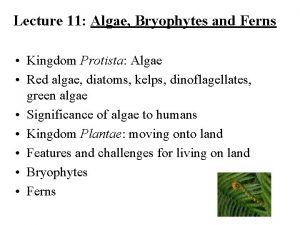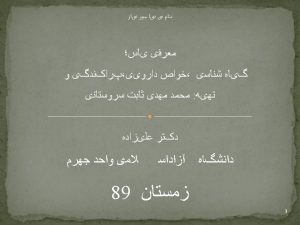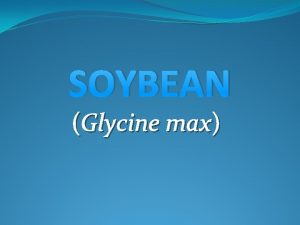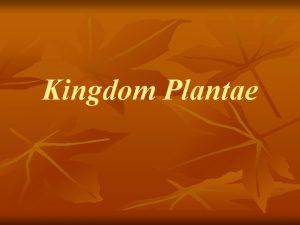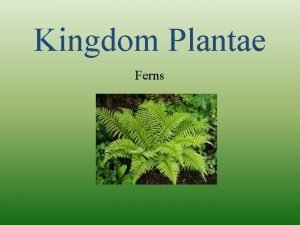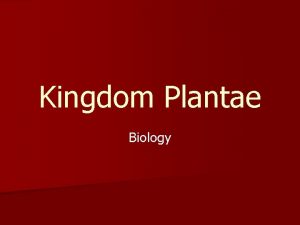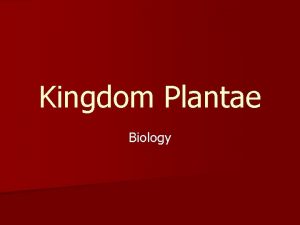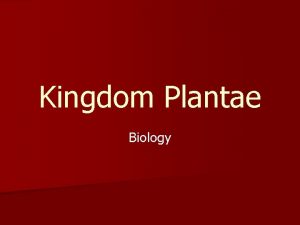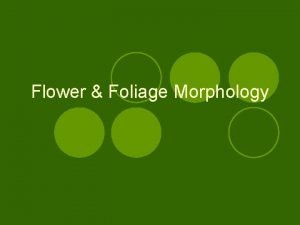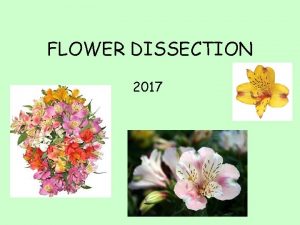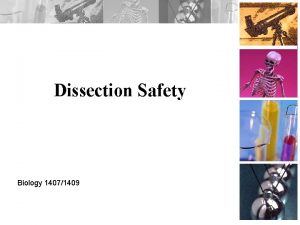Flower Dissection Alstroemeria Scientific classification Kingdom Plantae unranked




















- Slides: 20

Flower Dissection

Alstroemeria Scientific classification Kingdom: Plantae (unranked): Angiosperms (unranked): Monocots Order: Liliales Family: Alstroemeriaceae Genus: Alstroemeria L. Specie


Petals, Sepals, or Tepals • The alstroemeria is a type of flower that has tepals, because the petals and sepals are similar.

Stamen: Filament, Anther

Pistil: Stigma Ovary

Pistil Types

Ovary Types

Staminate: Has only functional stamen

Carnation = male

Pistiliate: has only functional pistil

Perfect: Has both functional stamen and pistil

Cotyledon: Embryonic first leaves Features Monocotyledon Dicotyledon Leaf structure Parallel veins Network veins Roots Fibrous roots Tap roots Stem Soft Hard No. of cotyledons 1 2 Number of petals Divisible by 3 Divisible by 4 or 5


Alstroemeria = Monocot

Tepals : Petals and Sepals Both the striped petals and the sepals, which are the leaves between the petals, come in an arrangement of three each. The petals and sepals have similar color and texture, so the sepals actually resemble the petals much more closely than they resemble most green leaves.

Reproductive Structures Alstreomeria plants contain six undivided stamens, which are the male reproductive stalks extending from the center of the flower. The ovaries of the flower have three carpels and are known as inferior, because they are fused to the base floral structure.

Leaves Alstroemeria plants are like grasses, irises and lilies in that veins go up to the leaves but do not branch across. These leaves are actually upside down because they twist as they extend from the stem. This feature is known as being resupinate.

For a closer look http: //www. microscopyuk. org. uk/mag/indexmag. html? http: / /www. microscopyuk. org. uk/mag/artoct 08/bj-peru. html

Begin your lab
 Alstroemeria flower parts
Alstroemeria flower parts Protista mobility
Protista mobility Kingdom plantae characteristics
Kingdom plantae characteristics Domain eukarya, kingdom plantae
Domain eukarya, kingdom plantae Old kingdom middle kingdom new kingdom
Old kingdom middle kingdom new kingdom Nnn ruled
Nnn ruled Youtube
Youtube Capital of egypt during the old kingdom
Capital of egypt during the old kingdom Alstroemeria anatomy
Alstroemeria anatomy Biology organism classification
Biology organism classification Disadvantages of fern plant
Disadvantages of fern plant Plant character
Plant character Plantae kingdom
Plantae kingdom Eukarya plantae
Eukarya plantae Animalia fungi plantae
Animalia fungi plantae Characteristics of organisms in kingdom plantae
Characteristics of organisms in kingdom plantae Six kingdom characteristics chart
Six kingdom characteristics chart Protista prokaryotic
Protista prokaryotic Ferns and algae kingdom
Ferns and algae kingdom Cladogram kingdoms
Cladogram kingdoms Which organisms are in the phylum tracheobionta
Which organisms are in the phylum tracheobionta
